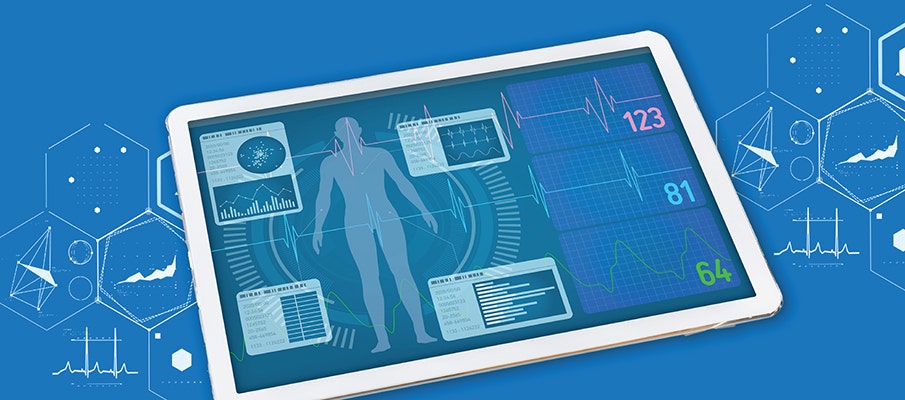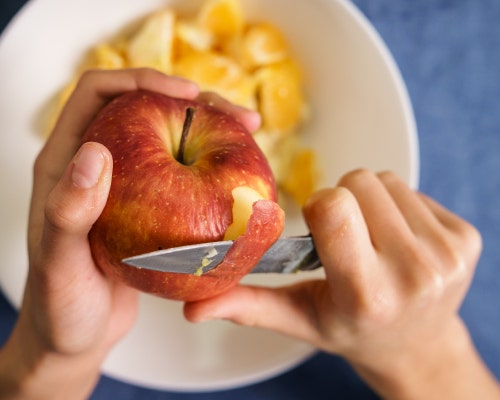What is Biohacking and Should You Try It?
- 12/4/23


Biohacking exists at the crossroads between biology and technology. Just like a computer hack attempts to find a more efficient way to achieve a desired result, biohacking does the same for health.
More broadly speaking, biohackers use the latest technology and experimental research to create a do-it-yourself way to enhance biology and ultimately optimize health. Critics of biohacking argue that many of the practices are ahead of validated scientific research. Proponents of biohacking support people being empowered to take their health into their own hands.
In this article, we’ll explore the foundational elements of biohacking and what the science says about the process.
What is Biohacking?
The four main elements of biohacking are nutrition, fitness, lifestyle, and brain health. People find the latest advances in scientific research and technology to make adjustments to their habits and lifestyles to help optimize health.
Let’s explore how biohackers are out at the forefront of experimental research and technological advances to design healthy lifestyles.
Nutrition Biohacking
Diet is one of the foundational elements of biohacking. The field of nutrigenomics and nutrigenetics was founded on the connection between our genes and nutrition and the environment.
At-home DNA testing kits, microbiome testing, and food sensitivity testing kits all give glimpses into how we can adapt our nutrition based on our biology. For example, DNA testing kits may be able to tell us if we have a genetic marker that affects our ability to absorb a specific nutrient or places us at a risk for certain conditions. This type of information can be useful for finding individualized dietary plans and supplement regimens.
Wearable technology also plays a role in nutrition biohacking. Consumers can now get continuous blood glucose monitors that provide real-time feedback on how specific foods affect blood sugar levels.
Fitness Biohacking
The fitness world is no stranger to hot new trends promising results. Fitness biohacking involves the development of a workout routine that combines strength, flexibility, mobility, and stability training to elevate fitness.
Arguably where biohacking fitness differs from traditional fitness is the recovery methods to help reduce recovery time. Such recovery methods include the use of a sauna, cryotherapy or cold plunge, and infrared light therapy.
The technology involved in fitness biohacking may include smartwatches or other activity trackers that provide heart rate, calorie expenditure, and movement tracking, typically in the form of step counts.
Brain Biohacking
In the case of cognition and brain health, there is well-established evidence to support that regular moderate exercise, engaging in cognitive activities, and following a Mediterranean-style diet are closely linked with better brain health and function.
Brain biohacking takes this foundational information and adds newer brain health practices, such as the use of “smart drugs” to potentially enhance cognition such as psychotropics and nootropics.
Psychotropics are a classification of drugs that can help stabilize mood, thoughts, and perception while nootropics are a category of drugs or supplements to enhance cognition. Initial research on nootropics suggests there is a potential for these drugs to enhance brain function, with a limited risk, but there is still a great deal to be learned about the safety and efficacy of long-term use.
Lifestyle Biohacking
Lifestyle, including environmental health, is another main factor in biohacking. Making small changes to your lifestyle and environment can positively influence health.
Sleep is the bedrock upon which we support our nutrition and fitness. Getting a good night’s sleep may not seem like a biohack, but good sleep hygiene is a determinant of health. There is technology you can use to help enable better sleep, such as wearing blue-light-blocking glasses to help reduce light exposure before bed. Another tool could be the use of a cooling pad that you place on the mattress to help lower your body temperature, which promotes good sleep.
One example of an environmental biohack is simply being in nature. Being outside increases your exposure to vitamin D, as well as has a mood-boosting effect on the brain. Some biohackers practice “grounding” which is standing barefoot on the ground, thus connecting you to the ground.
Biohacking Bottom Line
Biohacking is an enticing pursuit whether you want to optimize health or simply feel like yourself again. While many of these practices are founded on a scientific discovery or theory, there is much to be learned about many biohacking practices. It is highly encouraged to discuss this with your medical provider before attempting to biohack your health.
Resources
-
Gangadharbatla, H. Biohacking: An exploratory study to understand the factors influencing the adoption of embedded technologies within the human body. Cell Press. Heliyon. 2020;6:e03931. doi:10.1016/j.heliyon.2020.e03931.
-
Mathers, J. (2017). Nutrigenomics in the modern era. Proceedings of the Nutrition Society. 2071;76(3), 265-275. doi:10.1017/S002966511600080X.
-
Jackson, P, Corbett, V, et al. Promoting brain health through exercise and diet in older adults: a physiological perspective. Symposium Review. Journal of Physiology. 2015;594(16):4485-4498. doi:10.1113/JP271270.
-
Malík M, Tlustoš P. Nootropics as Cognitive Enhancers: Types, Dosage and Side Effects of Smart Drugs. Nutrients. 2022;14(16):3367. doi:10.3390/nu14163367.
-
Worley SL. The Extraordinary Importance of Sleep: The Detrimental Effects of Inadequate Sleep on Health and Public Safety Drive an Explosion of Sleep Research. P T. 2018;43(12):758-763.PMID: 30559589.
-
Shechter A, Kim EW, St-Onge MP, Westwood AJ. Blocking nocturnal blue light for insomnia: A randomized controlled trial. J Psychiatr Res. 2018;96:196-202. doi:10.1016/j.jpsychires.2017.10.015
-
Jimenez MP, DeVille NV, Elliott EG, et al. Associations between Nature Exposure and Health: A Review of the Evidence. Int J Environ Res Public Health. 2021;18(9):4790. Published 2021 Apr 30. doi:10.3390/ijerph18094790
-
Menigoz, W, Latz, T, et al. Integrative and lifestyle medicine strategies should include Earthing (grounding): Review of research evidence and clinical observations. Explore. 2020;16(3):152-160. doi:10.1016/j.explore.2019.10.005.





